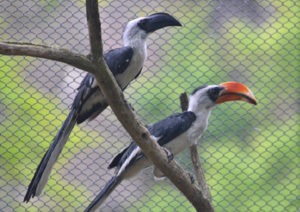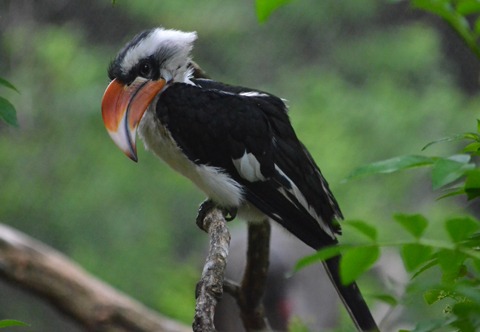What is a Von der Decken’s hornbill?
The Von der Decken’s hornbill (Tockus deckeni) are a small member of the hornbill family and was named after the German explorer Baron Karl Klaus von der Decken, who described this bird in his writings about his explorations in Africa.
Von der Deckens are found across eastern Africa from central and eastern Tanzania, throughout Kenya, and into southeastern Ethiopia and Somalia. It favors the open bush and scrubby woodlands of the dry savanna and arid steppe. They are 17-20 inches long, with mainly white plumage on their body with black wings and a black tail. The male has a very distinctive red and ivory two-tone bill. The female has an entirely black bill. The long bill allows them to forage and collect food items from branches they could not reach otherwise. Their short, broad, and rounded wings are efficient for short intervals of flight but not ideal for extended periods.

Their diet consists of snails, mice, nestling birds, lizards, tree frogs, seeds, fruit, berries, and insects. Interesting wild fact — the Von der Decken’s hornbill and the dwarf mongoose of the East African savannah have a unique relationship. The mongooses disturb insects for the hornbills to eat, while the hornbills provide increased vigilance (alertness for predators) allowing these mammals more time to feed.
Von der Deckens nest in tree cavities. The pair works together to partially close up the entrance with a mixture of mud, droppings, and food items such as fruit pulp until the female can barely fit through to enter the nest. The male continues to seal her in, and she also assists from the inside using food and feces until only a narrow opening remains. The male is then completely responsible for feeding his mate and the upcoming chicks for the next 2 months.
Here at The Maryland Zoo, the Von der Deckens can be found in the African Aviary along the Boardwalk.






Share this article